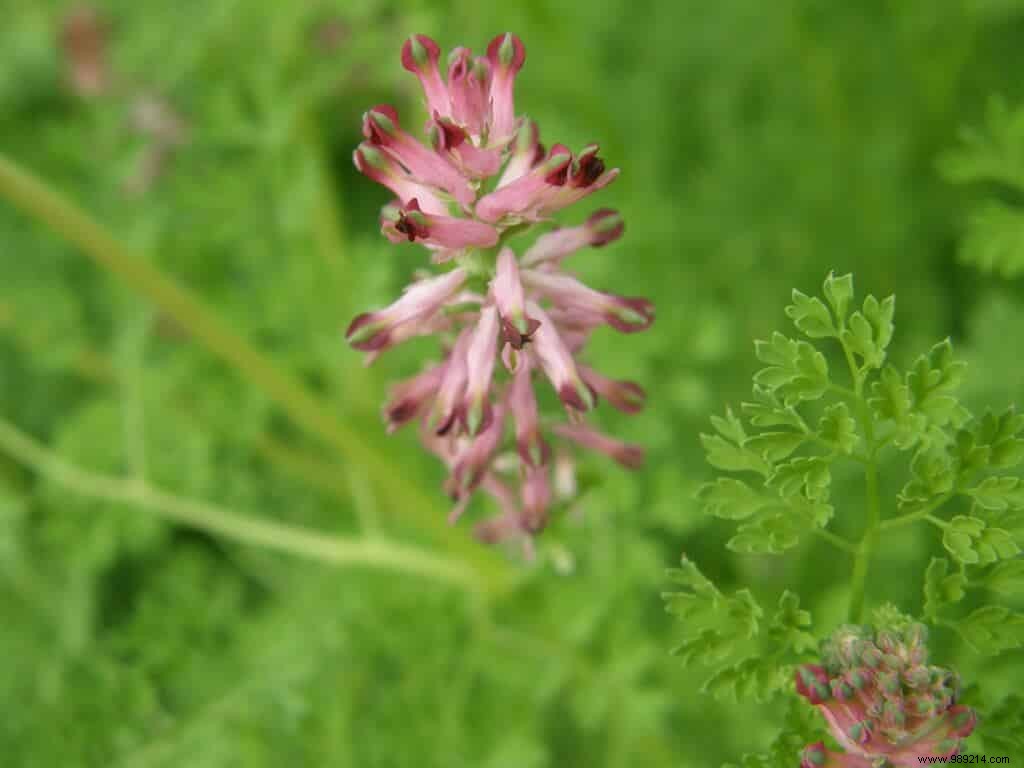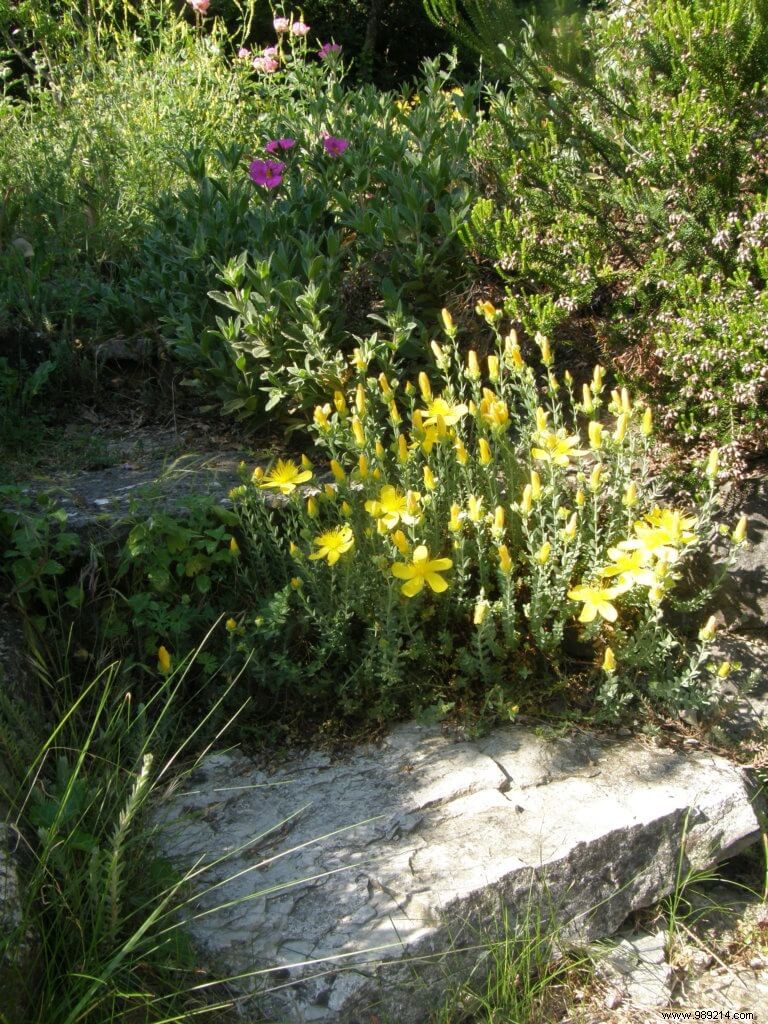Here is the week of alternatives to pesticides which lasts 10 days… It has to be, until it lasts 366. Still, it's good to do a few reminders.
The pesticide currently most used by home gardeners is weed killer. I would hide the name of the product you have in mind and which is controversial. But why do we destroy the herbs that didn't ask anyone. It's precisely because they didn't ask for anything and they invite themselves to the garden, just like that. A little bird dropping its droppings, a mischievous gust of wind, a gardener shaking his boots, and presto! This is our little seed that finds common ground with life. A very suitable land to develop and take on its scale of beautiful grass. Except that it does not grow where the gardener wishes and therefore becomes a weed. Out of sympathy, ethics, eco-responsibility, we call them weeds. It doesn't change anything, we don't want it here!

The fumitory, so pretty with its cut foliage and purplish flowers
Is it reasonable to want to destroy these unwanted weeds where they are?
It is true that they compete for space, light, water and nutrients with the crops, that they suffocate the girlfriends next door, that they are perhaps allergenic or pungent, that they can harbor parasites, insects or fungi, that they can damage the building, such as the stairs, terrace and low wall... And then they are ugly! (but beauty is very subjective)
In fact, it is mainly the aerial parts that bother us. And if they are cut, the roots will not grow very long. But the death of the roots brings organic matter to the soil population, leaves galleries for drainage and aeration, and sometimes, in the case of legumes, it is a large quantity of nitrogen which is available for the neighboring or following crops.
The management of weeds does not involve the total and definitive removal of undesirable plants where they are. It is better to learn how to manage them than to want to exterminate them at all costs.
Removing the aerial parts will greatly reduce the strength of the plant. If it no longer photosynthesizes, the growth is stopped. In the case of perennial plants, the reserves contained in the roots will allow the plants to restart. Nevertheless, they will tire until they disappear.
To cut the visible parts, everything is good:uprooting, hoeing, pruning, mowing… it is the type of plant and its position in the garden that determine the tool.
However, there are places where uprooting is hardly possible and inefficient:quackgrass in the gravelled driveway, rumex between terrace slabs... there are new hand tools, resembling hoes but narrower, or slightly twisted, or pointed. A whole panoply for weeding in joints, corners, usually inaccessible places.
There is also an old recipe from grandmother gardener, scalding, i.e. pouring boiling water over the herbs to be destroyed. This is thermal weeding. Please note that this process is not selective! Any scalded herb is doomed. Do not cook the tomatoes still on their feet…
Boiling water, to save energy, comes from cooking vegetables or pasta, rice... rather than pouring it into the drain, immediately water the plants to be destroyed. Don't burn your fingers, take your precautions.

Hypericum olympicum on stairs. He grew on his own, we leave him?
Obviously no chemical weeding, the garden does not need it.
Acetic acid, citric acid, sage or eucalyptus extract, corn gluten… more and more substances are used for herbicide purposes. Spraying with white vinegar also seems to give satisfactory results. But many are the more or less fanciful recipes; vinegar with water, or pure, with salt, with dishwashing liquid, with the four…
From experience I use vinegar mixed with water; ¾ of white vinegar for ¼ of water. And I spray in full sun, only on weeds! It is a grandmother's recipe (grandfather's in this case) which is not approved. On the other hand there are in the beginning, usable by amateur gardeners, organic weedkillers based on geranium essence. Effective on young seedlings and annuals. I sprayed bindweed, it lost its leaves, but two months later it was colonizing the bed again! It's always two months of gain...
Prevention involves several actions that can be taken together.
Sweeping the slabs:the particles of soil, small seeds and young seedlings do not resist the hard bristles of the road broom.
Mulching the beds slows down the germination of seeds.
Ground cover plants protect the arrival of other spontaneous plants. Mulching and ground cover play on the same board, land use. As nature abhors a vacuum, you might as well cover the earth permanently.
In the case of walkways, sometimes you have to rethink the design. A path of beaten earth or gravel but of low mineral thickness welcomes weeds. Might as well redo it by disbursing 15 cm, setting up a permeable tarpaulin or felt in the bottom and filling either with gravel, pine bark or crushed apricot kernels. You won't have weed for years!
Another prophylactic operation before any planting, the far-sighted gardener will be keen to remove all roots of perennial plants.
In the vegetable garden, it is best to sow and transplant in a line so that you can easily pass a tool, such as a scraper or hoe, between the rows.
For tillage, use a bio-claw (or grelinette) or a spade fork, or a claw. The goal is to loosen the soil without turning it over. Why ? Because the seeds that are in depth will be on the surface, ideal place for total germination! Another tool to avoid is the rotary tiller. If the work of the soil seems simpler, and faster, the result is not there. The roots of the weeds cut into small pieces start again. It is the multiplication of weeds by the division of clumps or the cutting of roots!
To continue reading:how to do without pesticides